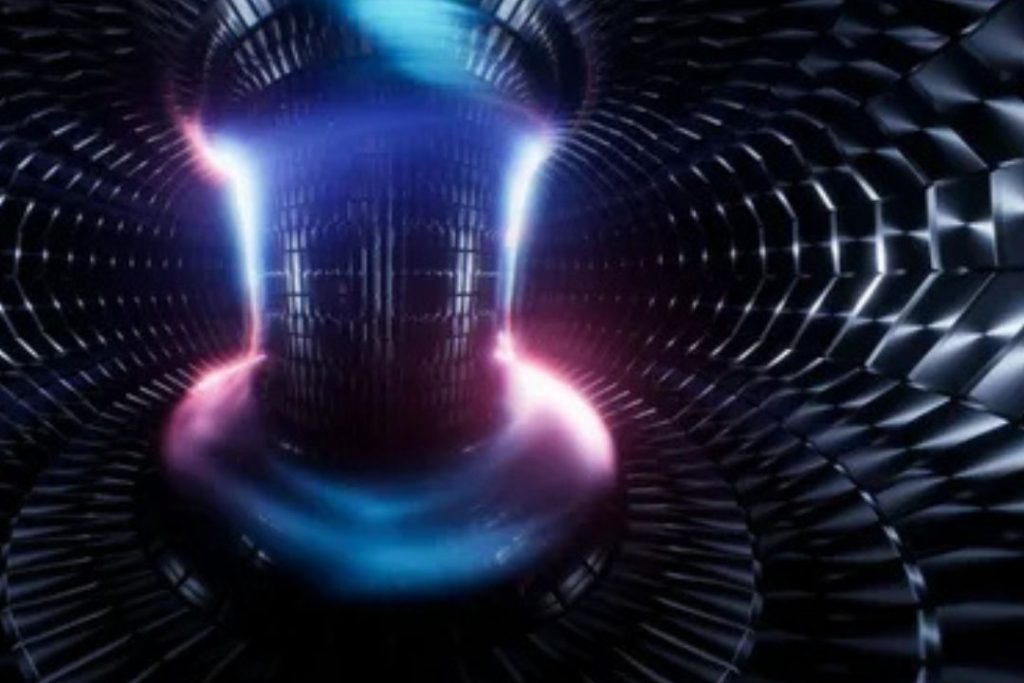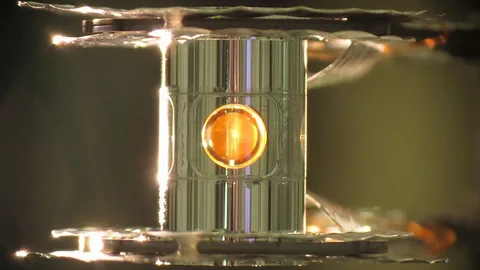Nuclear Fusion Breakthrough in Germany is a major step toward creating a world where we can light up cities, run factories, power cars, and charge phones — all without polluting the air or harming the planet. This exciting development brings us closer to using nuclear fusion, the same process that powers the Sun, as a clean and powerful energy source on Earth.
Nuclear fusion is a process in which two light atoms come together to form one heavier atom, and in doing so, they release an enormous amount of energy. This is the same process that powers our Sun and all stars in the universe.
Unlike burning coal or oil, fusion does not create smoke, carbon dioxide, or harmful waste. It uses hydrogen, a fuel found in water. So, it’s clean, safe, and almost unlimited.
But making fusion work on Earth is extremely hard. It needs extremely high temperatures (over 100 million degrees) and a way to hold and control hot gas (plasma) without touching anything.
That’s where Germany comes in. German scientists have made a breakthrough that brings us closer than ever to making fusion energy real and useful for everyday life.
What Exactly Happened in Germany?
At the Max Planck Institute for Plasma Physics in Greifswald, Germany, scientists have been working on a powerful fusion device called the Wendelstein 7-X, or W7-X for short.
This machine is a stellarator, a complex magnetic device designed to control and contain plasma — the super-hot gas where fusion takes place.
In their most recent experiment (late 2023 to early 2024), German scientists achieved something no one else had done before:
Key Achievements :
- Maintained fusion plasma for more than 8 minutes
This is a world record for machines of this kind. Most experiments only last a few seconds. - Reached plasma temperatures of over 100 million degrees Celsius
This is as hot as the center of the Sun! - Operated without damage to the machine’s inner walls, proving the design is stable and safe.
- Produced clean plasma with high energy efficiency, paving the way for future reactors to turn that heat into electricity.
This success proves that stellarators can handle long, stable fusion reactions, something scientists were unsure about for decades.
Why is Nuclear Fusion So Important for the Planet?
Let’s break it down with simple comparisons:
| Source | Fuel Used | Pollution | Danger | Renewable? |
|---|---|---|---|---|
| Coal | Fossil fuel | High smoke & CO₂ | High | No |
| Oil | Fossil fuel | High | Oil spills | No |
| Solar | Sunlight | None | Low | Yes |
| Wind | Wind | None | Very low | Yes |
| Fusion | Hydrogen from water | None | Very low | Yes ✅ |

Key Benefits of Fushion:
- No air pollution
Unlike coal, fusion does not release carbon dioxide or smoke. - No radioactive waste
Unlike fission (used in nuclear power plants), fusion does not create dangerous long-term waste. - Unlimited fuel supply
Hydrogen is the most common element in the universe and can be found in ordinary water. - No risk of meltdown
If something goes wrong, the fusion reaction naturally stops.
Fusion energy has the power to replace fossil fuels, reduce climate change, and provide clean electricity to billions of people.
What is the Wendelstein 7-X? Understanding Germany’s Fusion Machine
The Wendelstein 7-X is not a regular machine. It is a stellarator — one of the most advanced types of fusion reactors.
What’s a Stellarator?
A stellarator is a machine shaped like a twisted donut, designed to control plasma using only external magnets. This makes it more stable for long operations.
How is it Different from a Tokamak?
Most fusion projects like ITER in France use tokamaks. Here’s a simple comparison:
| Feature | Tokamak | Stellarator |
|---|---|---|
| Shape | Round (donut) | Twisted donut |
| Magnetic control | Uses magnets + electric current | Uses only magnets |
| Stability | Good for short time | Better for long time |
| Easy to design? | Easier | Harder |
| Germany’s choice | No | Yes ✅ |
Germany chose the stellarator because it is more stable over time, which is important if you want to run a fusion power plant 24/7.
The W7-X has over 70 superconducting magnets, each cooled to -269°C to work properly. It took more than 1 billion euros and 20 years to design, build, and test.
How Does Nuclear Fusion Actually Work? A Simple Explanation
Let’s go step by step:
- Fuel: Use two forms of hydrogen — deuterium and tritium. These are found in water and lithium.
- Heat: Heat the fuel to over 100 million degrees Celsius. At this temperature, hydrogen turns into plasma, a hot gas of free-moving particles.
- Magnetic Field: Use strong magnetic fields to trap the plasma inside a special chamber so it doesn’t touch the walls.
- Fusion Reaction: When two hydrogen nuclei collide, they fuse to form helium, releasing a huge amount of energy.
- Energy Use: This energy heats water into steam, which turns turbines and generates electricity — just like in current power plants.
Fusion is like putting a mini-Sun inside a machine, but under human control.
Challenges Still Ahead
Even with Germany’s success, many challenges remain:
- Longer run times
Holding plasma for 8 minutes is great, but power plants will need continuous operation for months or years. - Better energy capture
Scientists need to develop systems that turn the fusion heat into electricity efficiently. - Lower costs
Building fusion machines is very expensive. We need ways to make them cheaper and smaller. - Tritium supply
Tritium is rare and needs to be produced inside the reactor itself. - Global cooperation
Fusion is so big, it needs scientists from all over the world to work together.
Experts believe that fusion energy could be ready by the 2040s or 2050s, if all goes well.
Why Germany’s Work Matters Globally
Germany’s breakthrough proves that fusion energy is no longer just a theory. It’s real, working, and improving fast.
Their work supports other major international projects like:
- ITER (France)
- SPARC (USA)
- STEP (UK)
- K-STAR (South Korea)
Each of these projects learns from the other. As Germany proves the stellarator works for long periods, others can focus on scaling, cost, and production.
Conclusion –
A Brighter, Cleaner Future is Coming
it in Germany is more than just a science experiment — it is a hope for the entire planet.
It shows that humans can create energy the same way the Sun does, but safely and cleanly here on Earth. With continued research and support, fusion energy could:
- End our reliance on fossil fuels
- Help solve the climate crisis
- Provide safe, affordable power to everyone
Germany’s work brings us one big step closer to that future — a future where power is clean, unlimited, and for all.
Frequently Asked Questions (FAQ)
Q1. What is nuclear fusion?
A: Nuclear fusion is a process where two light atoms, like hydrogen, combine to form a heavier atom, like helium. This releases a large amount of clean energy, similar to what happens in the Sun.
Q2. Why is Germany’s breakthrough important?
A: Germany’s success shows that fusion energy could become a real, stable source of clean electricity in the future. It brings us closer to building power plants that use fusion instead of fossil fuels.
Q3. What is the Wendelstein 7-X?
A: The Wendelstein 7-X is a fusion reactor in Germany called a “stellarator.” It uses powerful magnets to control super-hot plasma and aims to make fusion energy safe and continuous.
Q4. Is fusion energy safe?
A: Yes. Unlike traditional nuclear power (fission), fusion doesn’t produce long-lasting radioactive waste and cannot cause dangerous meltdowns. It’s considered very safe.
Q5. When will fusion energy be used in everyday life?
A: Experts believe that if progress continues, we could start seeing fusion power used in real power plants by the 2040s or 2050s.
Q6. How is fusion different from fission?
A: Fission splits heavy atoms (like uranium) and creates harmful waste. Fusion joins light atoms and produces clean, safe energy — just like in the Sun.
Q7. What are the benefits of nuclear fusion?
A:
- No air pollution
- No carbon emissions
- Safe and reliable
- Almost unlimited fuel from water
- No long-term radioactive waste




